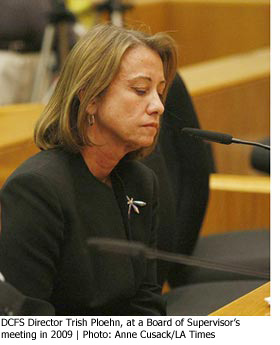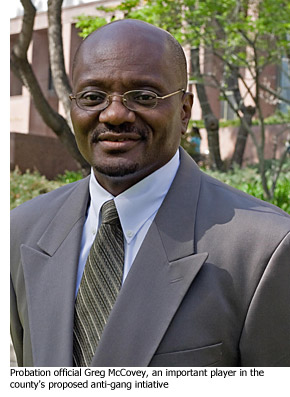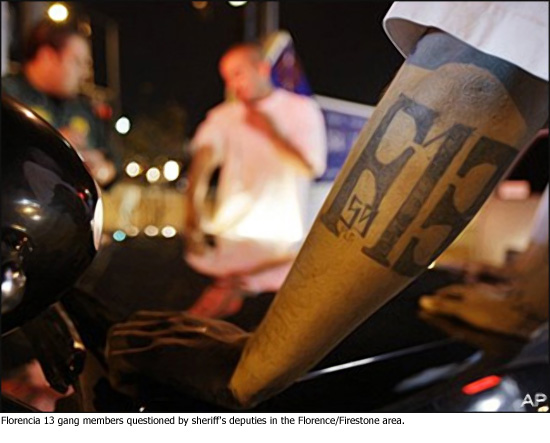Meet up to plan the subway
March 31, 2010
Want to have a say in what your subway will look like and where it will go?
As planners prepare to extend the subway westward, Metro is headed back to the Westside for a new series of community meetings this spring.
The meetings, which begin April 12, will feature updates on station planning, locations and design. Metro’s last round of community meetings in the fall of 2009 regularly attracted hundreds of people.
This time around, Metro officials will provide preliminary information on the five alternative routes for the extension currently under review. These proposed routes would add branches and stations at varying points throughout the Westside, including stations at Wilshire/Crenshaw and in the Westwood/UCLA area.
Information and community input from the meetings will be considered before Metro releases a Draft Environmental Impact Statement/Environmental Impact Report (Draft EIS/EIR) this coming summer. Technical analysis and development plans in the Draft EIS/EIR will be made available for public review before construction begins on the project.
Meeting schedules and summaries of past meetings are available here.
Posted 3/31/10
Veggie smugglers, beware
March 31, 2010
In L.A. County’s canine workforce, you’ve got your glamour hounds– dogs who can sniff out a multimillion dollar drug cache faster than you can say “film at 11.” And you’ve got your rough-and-ready patrol dogs—the ones renowned for collaring runaway bad guys in mean back alleys.
But where, oh where is that rare breed of dog who can take down a rogue shipment of dandelion greens, bok choy and parsley? To which the county agriculture department says: Meet Ebony and Tahoe.
The new dogs on the beat, together with their handlers, inspectors Hung Truong and Rogelio Carranza, are the pioneering members of the county’s new Agricultural Detector Dog Program.
Truong and Carranza recently traveled to Georgia for a 10-week course at the USDA National Detector Dog Training Center. There, they met their new dog partners and got to work on illicit produce detection.
The training initially involved teaching dogs to scratch at boxes in which handlers had placed five different fruits—guava, mangoes, stone fruit, oranges and apples. Then “non-target boxes”—containing items like clothes, candy and shampoo—were added to the mix, with treats bestowed on the dogs when they continued to scratch at the fruit-filled boxes in the midst of the other packages.
Since February, the team has been on the job in Los Angeles County, conducting inspections at FedEx warehouses and planning to expand soon into UPS and U.S. Postal Service facilities as well.
The stakes are high. An unwelcome pest that hitches a ride on, say, some homegrown peaches could quickly become established here.
“An infestation of such pests could cost California millions of dollars in crop and job losses, increased pesticide use, and quarantines that impact trade,” according to a new brochure on the program.
“The granddaddy of all pests that we don’t want to have infesting this county are the fruit flies,” says Dave Cassidy, quarantine deputy for the Department of Agricultural Commissioner/Director of Weights and Measures. “By stopping it before it even gets here, that’s the cheapest method.”
The effort is being funded with $311,205 in federal money passed along by the California Department of Food and Agriculture—an arrangement approved Tuesday by the Board of Supervisors. The funding covers all expenses associated with the program, including dogs, training and human salaries.
The team already is earning kudos for its work. Ebony, a Lab mix, was prominently featured in a recent pest report put out by the California Department of Food & Agriculture. In the best just-the-facts style of the police blotter, under the headline “LA County’s New Detector Dog Team’s First Find!” it said:
“On March 5, 2010, at about 8:00 a.m. at the FedEx in Santa Fe Springs, Ebony responded to an unmarked box sent from Arizona.
Inspector Truong and supervisor Carmen Rieger opened the unmarked box and found it contained dandelion greens, bok choy, dill, green lettuce, and parsley.”
What sounded like an innocent salad bar became considerably less appetizing when you learned about the garnishes it was carrying.
“The mixed vegetables appeared home grown and contained ants, aphids, mites, slugs, springtails, wasps, and moths. One of the insects was a big-headed ant (Pheidole sp.) which is a Q-rated pest. The shipment’s contents were destroyed by freezing.”
The discovery came as a shock—not least of all to Truong, who thought he was looking at an olive oil shipment.
 As for her compensation for the big find—“We call it ‘Jackpot,’ ” Truong says. “Instead of one piece of treat, we give ‘em four… They’re working for the treat, but they’re also working for us, so we praise ‘em up. I give her belly rubs, too.”
As for her compensation for the big find—“We call it ‘Jackpot,’ ” Truong says. “Instead of one piece of treat, we give ‘em four… They’re working for the treat, but they’re also working for us, so we praise ‘em up. I give her belly rubs, too.”
Tahoe, a purebred Labrador who weighs in at 70 pounds, has been making his share of finds, too, recently detecting an unmarked shipment of leeks coming from Michigan, according to Carranza, his handler.
It’s important work—and something that humans just can’t do. Unless a produce shipment is leaking, smelly, “taped weird,” or “coming from a high-risk area,” human inspectors have to rely on correct labeling to tell them what to inspect, says Rieger, the teams’ supervisor. But with dogs sniffing out the packages—correctly labeled and otherwise—as they come down the conveyor belt, human inspectors can devote more energy to properly investigating what they find.
“I love it,” says Carranza, 49, a 20-year department veteran. “Right now, I think it’s better with my dog. I’m not alone.”
Posted 3/30/10
Foster homes to be investigated
March 30, 2010
 Responding to the brutal death of a two-year-old toddler, Los Angeles County’s child welfare chief on Tuesday promised a broad emergency examination of all foster home agencies under contract with the county, which are responsible for the well being of more than 5,800 children.
Responding to the brutal death of a two-year-old toddler, Los Angeles County’s child welfare chief on Tuesday promised a broad emergency examination of all foster home agencies under contract with the county, which are responsible for the well being of more than 5,800 children.
The goal, said Department of Children and Family Services Director Trish Ploehn, is to swiftly determine that there are “are no children left in danger.” She added: “For the children in foster homes, we are doing a 100 percent review.”
Ploehn, who’s been under fire for a series high-profile child deaths in recent months, told the Board of Supervisors that county social workers will visit 2,500 foster homes with a detailed “physical environment checklist” aimed at determining whether they share the type of unsafe and illegal conditions found in the South Los Angeles home where toddler Viola Vanclief died on March 4. The children themselves, Ploehn said, will be interviewed and asked, among other things, whether they’re being properly fed and how many adults reside in the home.
The review was requested in closed session last week by the supervisors after disclosures of Viola’s death, who, according to a newly released Coroner’s report, suffered blunt force trauma and extensive internal injuries. The homes that will be inspected are part of a network of Foster Family Agencies (FFA), paid by the county and primarily responsible for ensuring the safety of children in homes they oversee, including hiring independent social workers to conduct inspections.
On Tuesday, those 58 agencies were reduced by one.
Acting on a recommendation by Ploehn, the board unanimously voted to terminate the contract of United Care, the foster agency that had placed Viola in one of its 88 homes.
That home was run by Kiana Barker, a licensed foster parent who had been the subject of five earlier neglect or abuse complaints, including one in which it was determined that she’d neglected her own daughter. Barker had an earlier conviction for theft, but had succeeded in obtaining a state license.
She told police investigators that she’d accidentally struck Viola with a hammer while trying to free her from a bed frame in which she’d become tangled. Also living in the house was Barker’s boyfriend, James Julian, a convicted armed robber. Both were arrested on suspicion of murder in Viola’s death and released without charges, pending results of the continuing criminal probe.
Child welfare investigators turned up evidence at Barker’s home of apparent lax supervision by United Care.
The agency failed to notice, for example, that Julian was living there, a violation of state law because of his criminal record. Julian had tried and failed to obtain a license as a foster parent in 2007. He and Barker had a 6 month-old child together.
Appearing before the Board of Supervisors on Tuesday, United Care’s executive director, Craig Woods, said revocation of his contract would be a “premature rush to action” based in part on “grossly inaccurate” media accounts. “United Care has a stellar 21-year track record,” he said, “and this one event should not warrant the termination of our contract.”
Woods said that the social workers hired by his agency twice made surprise visits to the home in February and found no clothing or other evidence that Barker’s boyfriend was living there. Barker had also signed a sworn statement to that effect, United Care’s executive director said.
In an exchange with Supervisor Zev Yaroslavsky, Woods said he was unaware that padlocks had blocked access to some rooms in the home, contrary to foster home rules. Woods also said he did not know that several video cameras were stationed around the home. The purpose and precise location of the cameras were not clear.
Woods also insisted that Barker’s prior theft conviction should not be considered as part of the revocation. Many foster parents, he suggested, have obtained licenses despite non-serious criminal records. In fact, he contended that “as many as half” of foster parents in Los Angeles County have criminal records and were able to get exemptions from the state to get licenses.
But Gary Palmer of the state’s Department of Social Services said Wood’s number is “totally false.” Palmer, chief of the technical assistance and policy branch for community-care licensing, said the exemption figure in Los Angeles County is an average of 5 percent.
Under the emergency review, meanwhile, county social workers and auditors also will take a more comprehensive examination of a randomly-selected sample of about 600 homes that are overseen by Foster Family Agencies. This review will be conducted by social workers from the Department of Children and Family Services and representatives from the County Counsel and Auditor-Controller offices. Also participating will be agents from the state.
Ploehn promised that the investigation would be complete by early May and that she would come back to supervisors with data and recommendations by May 15.
Posted 3/30/10
A key man for a new gang plan [updated]
March 25, 2010
Pacoima is about to see a lot of Greg McCovey.
In this east San Fernando Valley neighborhood, the veteran probation official will soon become the point man for L.A. County’s long-awaited and multi-faceted anti-gang initiative, which the Board of Supervisors is scheduled to review on Tuesday.
Pacoima is one of four gang hotspots that, under the initiative, would be a testing ground for a new approach by the county, placing a much heavier emphasis on gang prevention, in addition to suppression. The other areas, spread across the county, are: Harbor Gateway, Monrovia/ Duarte and Florence/Firestone, home to one of the region’s most entrenched gangs, Florencia 13.
The $3-million plan—several years in the making—calls for a collaborative and coordinated effort among multiple county agencies to ensure that services are directed at juveniles who’ve been accused of gang membership and identified as high-risk for re-joining a gang. The services, which are designed to parallel stepped up law enforcement, also would be provided to families of these individuals.
The Chief Executive Office (CEO) is recommending to the board that, in each of the four targeted areas, the initiative would begin by focusing on 25 juvenile probationers whom the county will attempt to steer from the gang life by bolstering mental health, welfare and economic services. Overseeing each of those four areas will be a “site coordinator” directing several “work groups” responsible for specific facets of the strategy, including providing more parks and library services aimed at the larger community.
McCovey is the first—and, so far, the only—site coordinator selected.
A 20-year Probation Department veteran, he’s anxious to get to work. “This is a great opportunity to bring together a broad array of services to help the community and our (gang) families,” McCovey says. “It’s exciting.”
McCovey, 50, has a good resume for understanding and combating gang culture. In his last assignment in the Probation Department, he directed the intake decisions about where to send minors in juvenile halls throughout the county. Before that job, McCovey directed the Probation Department’s post-release programs from juvenile camps, so he’s seen what happens when gang probationers re-enter the community.
For the past year, McCovey has been on loan to the CEO’s office to help refine the county’s gang plan. He spent time exploring all four neighborhoods in the pilot project, meeting with residents and community groups. And within the next few weeks, he’ll begin interviewing the families of Pacoima probationers to determine which 25 juveniles are at high risk for returning to gangs unless they—and their families—get help.
Pacoima is unique among the four areas because it falls entirely within the City of Los Angeles, McCovey says. That will make some aspects of his job easier because the city already has instituted its gang prevention and patrol initiatives, which are serving as models for the county.
McCovey will work closely, for example, with Los Angeles’ Gang Reduction Youth Development program, the city’s own prevention effort, launched in 2007. The city’s Summer Night Lights program of nighttime soccer, basketball and cultural programs already is in place in Pacoima. The county plans to export similar programs to county parks in the other three demonstration areas.
McCovey says his greatest challenge may be to ensure that county agencies involved in the proposed anti-gang initiative can quickly bring their unique assets to the gang problem without duplicating efforts.
“There are a lot of different groups out there doing good work,” McCovey says, “and we don’t want to overlap.”
If the Board of Supervisors gives a green light to the latest phase of the plan, McCovey expects to start full-time early next month. When not on the ground in Pacoima, he’ll be based in the CEO’s office downtown with the other soon-to-be-selected coordinators.
“I’m very aware of the barriers that kids face when they return home,” McCovey says. “What I want to do is break down those barriers to ensure they have every opportunity to succeed.”
Posted 3/25/10
Updated 4/6 /2010:
The Board of Supervisors unanimously approved the latest phase of the county’s long-anticipated gang reduction initiative after it was amended to modify personnel plans and costs. Among other things, the plan establishes pilot programs to better coordinate anti-gang strategies in four key neighborhoods plagued with gang issues.
Most of the changes Tuesday involved the four “site coordinators” of the pilot programs who would oversee the program in their areas and direct the delivery of services by county departments and local gang prevention groups.
Under the original plan, the coordinators potentially could be hired from several county departments playing key roles in the anti-gang initiative. The plan also included $871,000 for departments to “backfill” for individuals selected as site coordinators.
But an amendment introduced by Supervisor Michael Antonovich required that all four site coordinators be selected from the Probation Department because the plan, for now, focuses primarily on gang probationers. Supervisor Don Knabe proposed a second amendment that cut the money needed to back-fill for the coordinators, meaning the Probation Department would essentially have to absorb the costs.
Antonovich’s amendment also restricted the uses of $400,000 in gang prevention funding in county parks to exclude expenditures on field trips, food and prizes and other items with no direct bearing on gang reduction.
Potentially negligent foster care agency may lose county contract
March 25, 2010
Deeply dismayed by the blunt-force trauma death on March 4 of two-year-old toddler Viola Vanclief in a foster-care home, the Board of Supervisors this week authorized a formal “Do Not Use” order for United Care, Inc., the foster-family agency that supervised the home and 87 others in Los Angeles County. More than 200 children currently placed in those homes will be reassigned to other foster-care facilities. The agency had initially been placed on “hold, do not refer” status shortly after the incident was first reported.
At this Tuesday’s meeting, the Board will consider terminating United Care, Inc.’s County contract completely. Since Viola’s death, five previous abuse complaints have emerged about the foster-parent currently under investigation in that case, including a substantiated 2002 case of neglect of her own biological child. Since 2001, United Care itself had repeatedly been accused of permitting abuse and neglect in its supervised foster homes, and at least three dozen referrals were later substantiated.
Toss out those smokes, dust off that bike
March 25, 2010
Flush with a new $32 million public heath grant, Los Angeles County in the weeks ahead will begin attacking obesity and tobacco use by underwriting an array of nutrition and fitness strategies, including an innovative plan for bicycle and pedestrian paths near Metro rail stations.
In all, nearly 20 “Transit Oriented Districts” are being envisioned along the Metro Blue and Green lines in the City of Los Angeles and unincorporated county territories where obesity rates are particularly high among children and adults. The idea is not only to lay the groundwork for pedestrian and bike amenities around the stations but also to expand access into surrounding neighborhoods with populations of at least 550,000.
In a boon to the region’s increasingly organized cycling community, crucial funding also will be provided for environmental reviews of the county’s Bikeway Master Plan, a network of on- and off-road bikeways. The plan, currently being drafted, was facing a major hurdle because money for the assessments was expected to start drying up.
The county’s bike plan coordinator, Abu Yusuf, said he “was overjoyed” to learn of the infusion of money. “It wasn’t a sure thing,” said Yusuf, an avid cyclist. “We could have definitely been under the chopping block.”
These efforts, important as they are, represent just one facet of a sweeping strategy that the county’s Department of Public Health proposed late last year to U.S. Health and Human Services and the Centers for Disease Control and Prevention.
Facing intense competition from communities nationwide, Public Health was awarded $16 million for obesity, nutrition and physical activity projects, along with another $16 million for anti-tobacco efforts. The grant, provided under the American Recovery and Reinvestment Act (ARRA), was announced Friday.
“I personally know the challenges that come from quitting smoking and adopting better habits, such as exercising more and eating healthier,” said Supervisor Zev Yaroslavsky, who pushed public health officials to expand their proposal to include bicycle and pedestrian amenities as well as a social media campaign. “At a time when government so often has been forced to cut the budget, it’s nice to gain some new resources to create healthier, smoke-free environments and reduce chronic diseases such as diabetes.”
The grant monies, which were distributed nationwide, signify a turning point of sorts for the federal government, which traditionally has not invested huge sums at the local level for preventive health measures or for planning, policy support and logistical direction.
The largest chunk of the grant, for example, will finance six three-member “mobilization” teams that will be dispatched to work with community groups, local officials and others to support passage of second-hand smoke rules in at least 20 cities in L.A. County.
The county also will team up on several fronts with the Los Angeles Unified School District and the Los Angeles County Office of Education on issues ranging from physical education to the creation of more stringent nutritional standards for school meals.
Said Dr. Paul Simon, director of the county’s Public Health Chronic Disease and Injury Prevention: “We want to build healthier lives, from the ground up.”
To read additional details of the Public Health Department’s pitch to the federal government, as reported to the Board of Supervisors last November, click here.
Running (and walking) for a cause
March 25, 2010
Last week’s L.A. Marathoners might not want to put their running shoes away quite yet. The 8th annual “Victory for Victims 5k and 10k Run/Walk” will be held April 11 at Lake Balboa in Encino and benefit the Northridge Hospital’s Center for Assault Treatment Services (CATS). CATS is the only 24/7 child and sexual abuse treatment program in the San Fernando and Santa Clarita valleys.
Runners will travel through the newly completed Bull Creek Channel Ecosystem Restoration Path, home to hundreds of wildlife species. As an official “cool-down” event to the Marathon, the Run/Walk will feature 2,000 runners, culminating in a finish line festival for all attendees.
Several Los Angeles and sports personalities are expected to attend the event, including Olympic Decathlon gold medalist Rafer Johnson and L.A. City Councilmember Tony Cardenas. The Laker Girls will lead aerobic exercises and food will be provided by such vendors as Los Toros Mexican Restaurant, Jamba Juice and Ben & Jerry’s Ice Cream.
Fundraising and registration details are available at www.abuse-assaultservices.org.
Posted 3/25/10
BYOB means bring your own binoculars
March 25, 2010
The sessions will take place in Burton Chace Park in Marina del Rey.
Each outing includes a lecture and an overview of the Ballona Wetlands, followed by something that sounds lots better than reality TV: a chance to “observe various bird species compete for resources in the shoreline and vegetation habitat.”
Pre-registration is required for the two-hour outings. More information is here.
Posted 3/25/10
Teen tragedy, set to music
March 24, 2010
Eli Villanueva is driving with his girlfriend in Burbank when they come upon two people on a bridge over the 5 Freeway.
The young man looks ready to jump. The young woman beside him is trying to restrain him.
“She was desperate. She was hysterical and really trying to hang on,” Villanueva remembers. “I had stopped the car and went over to see if I could offer some assistance…As I get there, the young man sees me.” Villanueva reaches out, clasps the young man’s hand and helps pull him back from the brink.
That split-second, adrenalin-pumping moment of human contact took place two years ago. Earlier this month, Villanueva felt those emotions rush back, confronted again with the traumas of youth in a different and unexpected context.
As resident stage director for LA Opera’s education and community programs, he was at work on an unusual project to turn poetry by teens in Central Juvenile Hall into songs to be performed by opera singers. He’d come across a poem called “Safe.”
Something that seemed like an ordinary day
Started off as promising but ended wrong in every way
Driving pretty fast in my Mercedes goin 80
As I come along the bridge and see a
young girl on a stump going crazy,
steppin to the edge while rocks are tumblin
off the road, and as I read the sign ahead
we’re 200 ft in the air is what I’m told.
Using my first mind I got out of the car
and started preachin. Next thing I know
I’m walking towards a person and I’m reachin.
My hands extended, my tears on edge,
all I can do is pretend that this person
is not my baby sister, about to reach her end…
“Safe,” with music by Villanueva and lyrics by a girl known to him only by her age and housing unit, gets its world premiere Friday. It’s one of four original songs to be performed at a Central Juvenile Hall “writers retreat” featuring the unlikely pairing of LA Opera and InsideOUT Writers, a nonprofit program that teaches creative writing to kids in L.A. County’s juvenile hall system.
It’s an improbable partnership but maybe not such a stretch.
“Here are the central themes of these kids’ lives: violence, death, guns, gangs, dead homies, beloved mothers, absent fathers…Tragedy. Which is perfect for opera,” says Sheri Lin, writing program director at InsideOUT.
 For the opera collaboration, Lin selected 11 poems written by students in 2008 and 2009. Villanueva ended up setting four of them to music.
For the opera collaboration, Lin selected 11 poems written by students in 2008 and 2009. Villanueva ended up setting four of them to music.
From the beginning, “Safe” stood out.
“That one affected most of us when we read it,” Villanueva says. “When I read it, I was actually a little bit afraid of it”—particularly about the challenge of capturing the 18-year-old girl’s perspective that is essential to the piece.
“It takes you on an arc,” he says. “It’s light at first. It’s lilting. And then from there, it doesn’t get violent, it doesn’t get tragic–it actually becomes sympathetic and touching and quite still.”
Then there was “If I Played My Song Backwards,” written by a 17-year-old boy.
“When I first read it, I said this is already a song,” Villanueva says.
If I played my song backwards I’d get—
a life
a love
& new best friends
a dog
a boy
The song never ends
a mom
her mom
the loves of my life
my moe
my truck
I’d feel all my strife
my bro
my school
how I miss these days
my lungs
my health
my life’s gone a blaze
my barbies
my binky
The days left unheard
That’s what you’d get when you play my song backwards.
Those words conveyed longing and regret—and like the other poems, seemed to offer a transcendent message for Villanueva to set to music.
“I’m really trying to relate to the moments which they are describing,” Villanueva says. “Some of these things that they are feeling can be quite universal…Sometimes what I read will bring up pictures in my own life.”
It would have been easy to verge into rap or beatbox stylings. But Villanueva took another musical route, channeling “a French-flavored waltz” in “If I Played My Song Backwards,” for example.
“If you played the melody with an accordion,” he says, “you’d be in Paris.”
“What my hope was to take the words that they came up with to see if I could translate them in an artistic way–but not too far away from what I thought would connect with them,” he says. “Not too artsy-fartsy.”
Villanueva didn’t just write the music; he’ll perform at Juvenile Hall on Friday, along with soprano Karen Vuong and pianist Daniel Faltus.
Also on the program are some classics from the operatic and musical theater, such as the “Largo al factotum” from Rossini’s “Barber of Seville” and “La chi darem la mano,” a duet from Mozart’s “Don Giovanni.”
And that will almost certainly be a first for most in the audience, Lin says.
“I’m sure a lot of the kids are not going to know what opera it is,” she says. But “they’re going to take a kid’s writing and set it to music. That’s going to ensure a connection.”
“My hope is that it will be this phenomenal experience for everybody involved,” she adds. The Juvenile Hall kids “are the tragedies of our society today. Their stories need to be heard. This is a medium for their stories to be heard.”
The marriage of opera and InsideOUT originated with philanthropist Eva Stern, who’s underwriting the Juvenile Hall program.

As the wife of LA Opera chairman and CEO Marc I. Stern (“He’s the opera lover; I’m the opera liker”), Eva Stern is no stranger to black tie galas and hobnobbing with the likes of Plácido Domingo, the opera’s general director.
But she’s also the chair of InsideOUT’s board, and serves on the board of organizations including the Center Theater Group’s education committee and Alliance Charter Schools. So she’s seen first-hand the power of exposing children to fine art, whether it’s a field trip to “Frost/Nixon” at the Ahmanson or a visit by opera singers to the Stern Math and Charter School on the campus of Cal State LA.
“These are kids who won’t even have heard of ‘Westside Story,’ ” Stern says. “It’s not about making them opera lovers; it’s giving them exposure to something. Any vehicle is the right vehicle if it is done keeping the audience in mind.”
And if this particular mash-up shatters some preconceptions, so much the better.
“Considering that the world thinks of opera as very high brow,” Stern says, “it’s important to know that opera is out there in the community and educating.”
Posted 3/24/10
















 Check for the latest closure information
Check for the latest closure information








